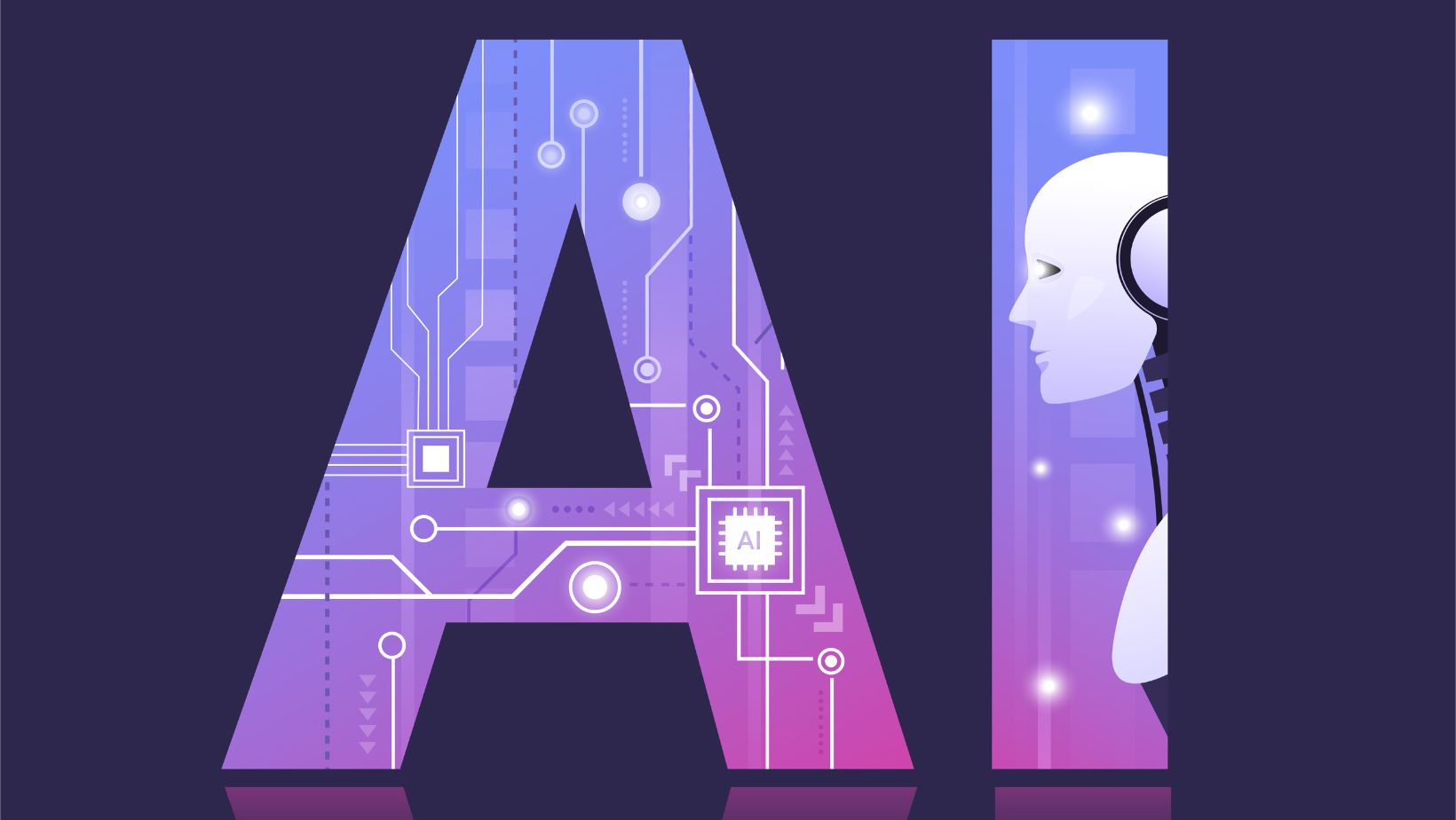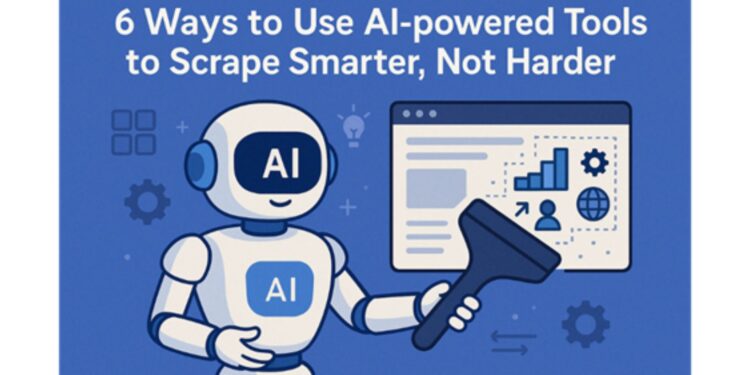In today’s data-driven business landscape, web scraping has evolved from a technical necessity to a strategic advantage.
The introduction of AI has revolutionized how we extract, process, and utilize web data.
Whether you’re monitoring competitors, researching market trends, or building data-intensive applications, understanding how to leverage artificial intelligence in your web scraping workflows can dramatically improve your outcomes.
After analyzing the most successful approaches in the field, here are six proven ways to use AI-powered tools to scrape smarter and maximize your data collection efforts.
1. Overcome Dynamic Website Challenges with Adaptive AI
One of the most significant hurdles in traditional web scraping is handling dynamic content loaded through JavaScript or complex AJAX requests.
AI-powered scraping tools now excel at navigating these obstacles with remarkable efficiency.
These advanced tools can:
- Understand and interact with JavaScript-rendered pages without manual configuration
- Adapt automatically to dynamic content changes as they load on the page
- Navigate complex single-page applications that traditional scrapers often fail to parse
For example, tools like Crawl4AI paired with advanced language models can intelligently process dynamic websites by simulating user interactions and waiting for content to fully render before extraction begins.
2. Eliminate Complex Selectors with Natural Language Instructions
Traditional web scraping required detailed knowledge of CSS selectors, XPath expressions, and DOM navigation.
AI has fundamentally changed this approach, making data extraction accessible to non-technical users through natural language instructions.
With AI-powered scraping tools, you can:
- Request data in plain English rather than writing complex code
- Describe what you want in conversational terms (e.g., “extract all product prices and descriptions”)
- Focus on your goals instead of implementation details
As one Reddit user shared about their AI scraping project: “I built an AI-powered web scraper that can understand any website structure and extract the desired data in the preferred format.”
This democratization of web scraping technology has opened new possibilities for teams across various business functions.
3. Transform Unstructured Content into Organized Datasets
The web is filled with unstructured information—blog posts, forum discussions, product descriptions, and more.
Traditional scrapers could only extract this raw content, leaving the challenging work of structuring and organizing to the user.
Modern AI scraping solutions go much further by:
- Automatically categorizing extracted information into defined schemas
- Identifying relationships between different content elements
- Converting unstructured text into structured tabular data

4. Bypass Anti-Scraping Measures Intelligently
As websites implement increasingly sophisticated anti-scraping measures like CAPTCHA challenges, IP blocking, and browser fingerprinting, AI-powered tools to scrape smarter have developed countermeasures that keep your data pipelines flowing.
Advanced AI scraping solutions can:
- Mimic human browsing patterns to avoid triggering anti-bot systems
- Automatically solve CAPTCHA challenges when encountered
- Manage proxy rotation and request timing to prevent IP blocking
These capabilities mean you can maintain reliable data extraction from even the most protected websites without constantly adjusting your scraping strategy.
5. Scale Data Collection Across Multiple Sources
Traditional scraping methods typically require custom configurations for each target website, making large-scale data collection extremely resource-intensive.
AI scraping tools have dramatically improved scalability through adaptive learning.
With AI-enhanced scraping, you can:
- Deploy a single solution across hundreds of different websites
- Automatically adapt to different page structures without manual reconfiguration
- Maximize extraction success rates even as target websites evolve
This scalability translates to more comprehensive market insights, better competitive intelligence, and more robust data foundations for analytics and machine learning projects.
6. Integrate Extracted Data into Existing Workflows
The most valuable data is actionable data.
Modern AI scraping solutions excel at not just collecting information but making it immediately useful within your existing business processes.
Today’s leading AI scraping platforms offer:
- Direct integration with common business tools like Google Sheets, Notion, and Airtable
- API access for custom application development
- Automated notifications when important data changes are detected
As Gumloop highlights in their platform documentation, users can “create alerts and send notifications to Slack or email” when significant changes are detected, transforming passive data collection into an active business intelligence system.
Choosing the Right AI Scraping Approach
When evaluating AI scraping solutions for your specific needs, consider the following factors:
- Ease of use vs. customization options: Some tools prioritize simplicity, while others offer more technical flexibility
- Integration capabilities: Ensure the solution works seamlessly with your existing tech stack
- Ethical and legal compliance features: Look for tools that respect robots.txt directives and offer rate-limiting
- Pricing structure: Consider whether per-credit, subscription, or usage-based billing aligns with your needs

For organizations just starting with AI-powered scraping, user-friendly platforms like Browse.AI, Octoparse, or Bardeen offer immediate value with minimal technical overhead.
More advanced users might prefer programmable solutions like ScrapeGraphAI, which provide greater customization.
The Ethics of AI-Powered Scraping
While AI makes web scraping more powerful, it also brings increased responsibility.
Always consider:
- Website terms of service and intended data usage
- Rate limiting to avoid overwhelming target servers
- Privacy concerns when collecting possibly personal information
- Transparency about your data collection practices
As Oxylabs notes in their legal overview, “There are no specific laws prohibiting web scraping, and many companies employ it in legitimate ways to gain data-driven insights.”
However, responsible practices remain essential for sustainable data collection.
Conclusion
AI has transformed web scraping from a technical challenge into a strategic business capability.
By implementing these six approaches to AI-powered tools to scrape smarter, you can build more resilient, efficient, and valuable data pipelines that provide actionable insights across your organization.
Whether you’re a data scientist seeking training data, a marketer tracking competitors, or a product manager researching market trends, AI-enhanced scraping tools offer unprecedented capabilities to gather, process, and utilize web data.
The future of web scraping isn’t just about collecting more data—it’s about collecting smarter data that drives better business decisions.
By embracing AI-powered solutions today, you position your organization to leverage the full potential of the information available across the web.









